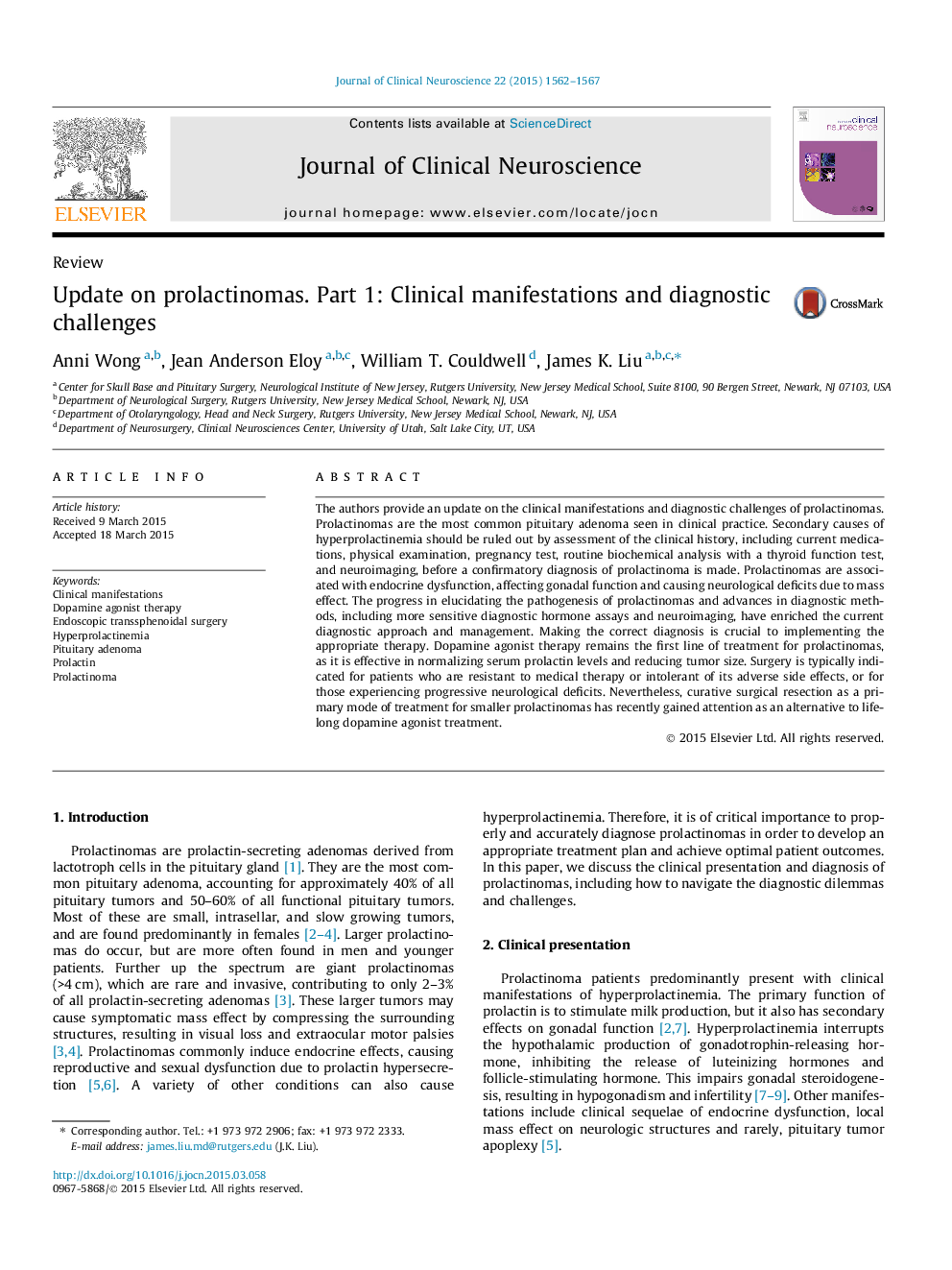| Article ID | Journal | Published Year | Pages | File Type |
|---|---|---|---|---|
| 3058811 | Journal of Clinical Neuroscience | 2015 | 6 Pages |
•Prolactinomas are the most common pituitary adenomas seen in clinical practice and the clinical presentation and sizes of the tumor often differs between males and females.•Secondary causes of hyperprolactinemia should be ruled out by assessment of clinical history including evaluation of current medications, physical examination, pregnancy test, routine biochemical analysis with a thyroid function test, and neuroimaging, before a confirmatory diagnosis of prolactinoma is made.•Prolactinomas are associated with gonadal dysfunction, infertility, osteoporosis and sometimes optic chiasm compression due to mass effect in larger tumors.•It is important to differentiate non-functioning pituitary adenomas with hyperprolactinemia due to stalk section effect from true macroprolactinomas.•It is critical to recognize the high-dose hook effect in giant invasive macroprolactinomas so that these tumors do not get misdiagnosed with a falsely low prolactin level.•Making the correct diagnosis is essential because the first line of therapy is medical management with dopamine agonists.
The authors provide an update on the clinical manifestations and diagnostic challenges of prolactinomas. Prolactinomas are the most common pituitary adenoma seen in clinical practice. Secondary causes of hyperprolactinemia should be ruled out by assessment of the clinical history, including current medications, physical examination, pregnancy test, routine biochemical analysis with a thyroid function test, and neuroimaging, before a confirmatory diagnosis of prolactinoma is made. Prolactinomas are associated with endocrine dysfunction, affecting gonadal function and causing neurological deficits due to mass effect. The progress in elucidating the pathogenesis of prolactinomas and advances in diagnostic methods, including more sensitive diagnostic hormone assays and neuroimaging, have enriched the current diagnostic approach and management. Making the correct diagnosis is crucial to implementing the appropriate therapy. Dopamine agonist therapy remains the first line of treatment for prolactinomas, as it is effective in normalizing serum prolactin levels and reducing tumor size. Surgery is typically indicated for patients who are resistant to medical therapy or intolerant of its adverse side effects, or for those experiencing progressive neurological deficits. Nevertheless, curative surgical resection as a primary mode of treatment for smaller prolactinomas has recently gained attention as an alternative to lifelong dopamine agonist treatment.
